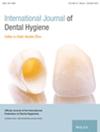The impact of different states of type 2 diabetes when stratified by baseline HbA1c on the periodontal outcomes of non-surgical periodontal treatment: A systematic review and network meta-analysis
Abstract
Background
Type 2 diabetes mellitus (T2DM) has been considered by many studies to have a bidirectional relationship with periodontitis. This systematic review and network meta-analysis aimed to investigate the impact of different states of T2DM when stratified by baseline HbA1c on the clinical outcomes of non-surgical periodontal treatment (NSPT).
Methods
This study followed the Preferred Reporting Items for Meta-Analyses (PRISMA) guidelines and involved an electronic literature search (from inception to the 2nd of January 2023). The study included at least two groups of patients: chronic periodontitis only (No-DM) or periodontitis and well-controlled/poorly controlled type 2 diabetes mellitus (WC/PC-T2DM). Clinical outcomes included probing depth (PD) reduction, bleeding on probing reduction, and clinical attachment level (CAL) gain. Direct and indirect comparisons between groups were assessed by network meta-analysis, thus allowing us to establish a treatment ranking.
Results
Ten prospective cohort studies (11 data sets) were included for qualitative analysis and network meta-analysis. The data included in this study had high consistency; in addition, a funnel plot and Egger's test showed that the articles had low publication bias. Network meta-analysis showed that the effect of NSPT in the No-DM group was significantly better than the WC-T2DM group [weighted mean difference (WMD) = 0.09, 95% confidence interval (CI) (0.01, 0.18)] and the PC-T2DM group [WMD = 0.09, 95% CI (0.01, 0.18)] in terms of CAL gain and better than the PC-T2DM group [WMD = 0.15, 95% CI (0.02, 0.28)] in terms of PD reduction. According to the surface under the cumulative ranking value, the No-DM group had the highest probability of achieving the best outcome following NSPT.
Conclusions
Collectively, our analyses show that T2DM exerts significant effects on the outcomes of NSPT.

 求助内容:
求助内容: 应助结果提醒方式:
应助结果提醒方式:


